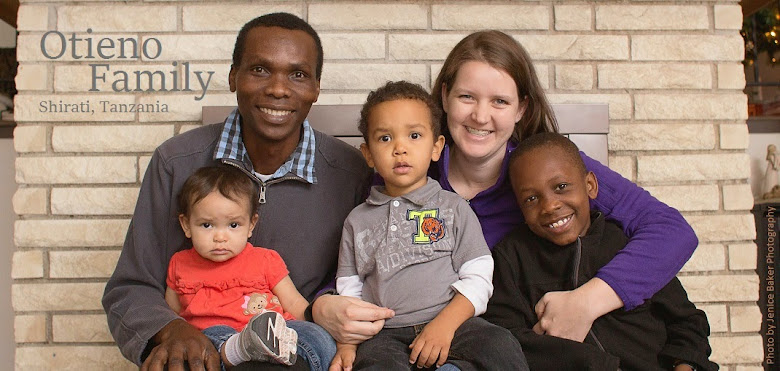This is the second year of the Combating Gender Based Violence program he manages. In the first year, Fred and his colleagues, Rose and Tumaini, were reaching out to the villages of Rorya District to teach people about gender based violence to try to reduce it. They discovered as they helped victims and talked to oppressors that the systems intended to intervene for the protection and justice of the victims were broken. The illiterate woman in the village whose husband beat her so badly she was living with an untreated broken leg could not access the village elders, the police or the courts which might help her and her children. So at the end of the first year of the program, Fred's team decided that they would apply for a second round of funding with the intention of trying to smooth the way for victims to receive the help, protection and restitution they need.
One of the ways they are doing that is through equipping the Gender Officers at the local police stations. They met an amazing, inspiring police officer named Saumu (wearing a navy blazer and white head covering in the photo below). They brought her some resources for her office, and she was very appreciative and helpful as they discussed how to better equip the well-intentioned officers dealing with an overwhelming and emotionally draining case load. These officers have few resources to seek out the cases they're meant to be addressing and often suffer uncertainty as they balance traditional solutions to marital and family conflict with the national laws for the protection of women and children.
Fred's plan was to create "GBV Hotlines" by giving each Gender officer a new mobile phone with a phone number which would be publicized throughout the district so that people would have emergency access to the appropriate, trained police officer. An opportunity came to partner with the mobile company Tigo, which donated nice phones on which the officers can take photos to support their cases and also access the app WhatsApp.
WhatsApp is a mix between text messaging and chatting, and it allows for groups to communicate with all members simultaneously. All of the officers who received phones have a group on WhatsApp where they can compare notes, brainstorm together, and support one another. The response has been pretty incredible. One officer recently wrote "I have a case of a woman who became pregnant and the father abandoned the woman and baby. Now the child is two years old and the father has come demanding the baby to be taken the the grandmother [the father's mother]. I refused him custody based on the 1998 Act for Protection of Women and Children. Is the the right justification? What do you all think?" (This isn't an exact quote, as it's translated and summarized.) Many of his fellow officers responded to encourage him in his interpretation of the law.
Fred's job is often tedious, involving many more days of budgets and reports than days that feel like he's changing the world, but he is really proud of this solution, with good reason. He is the central cog linking international donors, the police force, a national mobile phone company and the victims of gender based violence in an innovative way that actually makes a difference! This idea is so interesting to people, that they're going to be on local radio and national news.
God has given Fred an incredible, creative mind and the drive and backbone to bring his ideas about. I'm so proud of him and proud to be his wife!


















